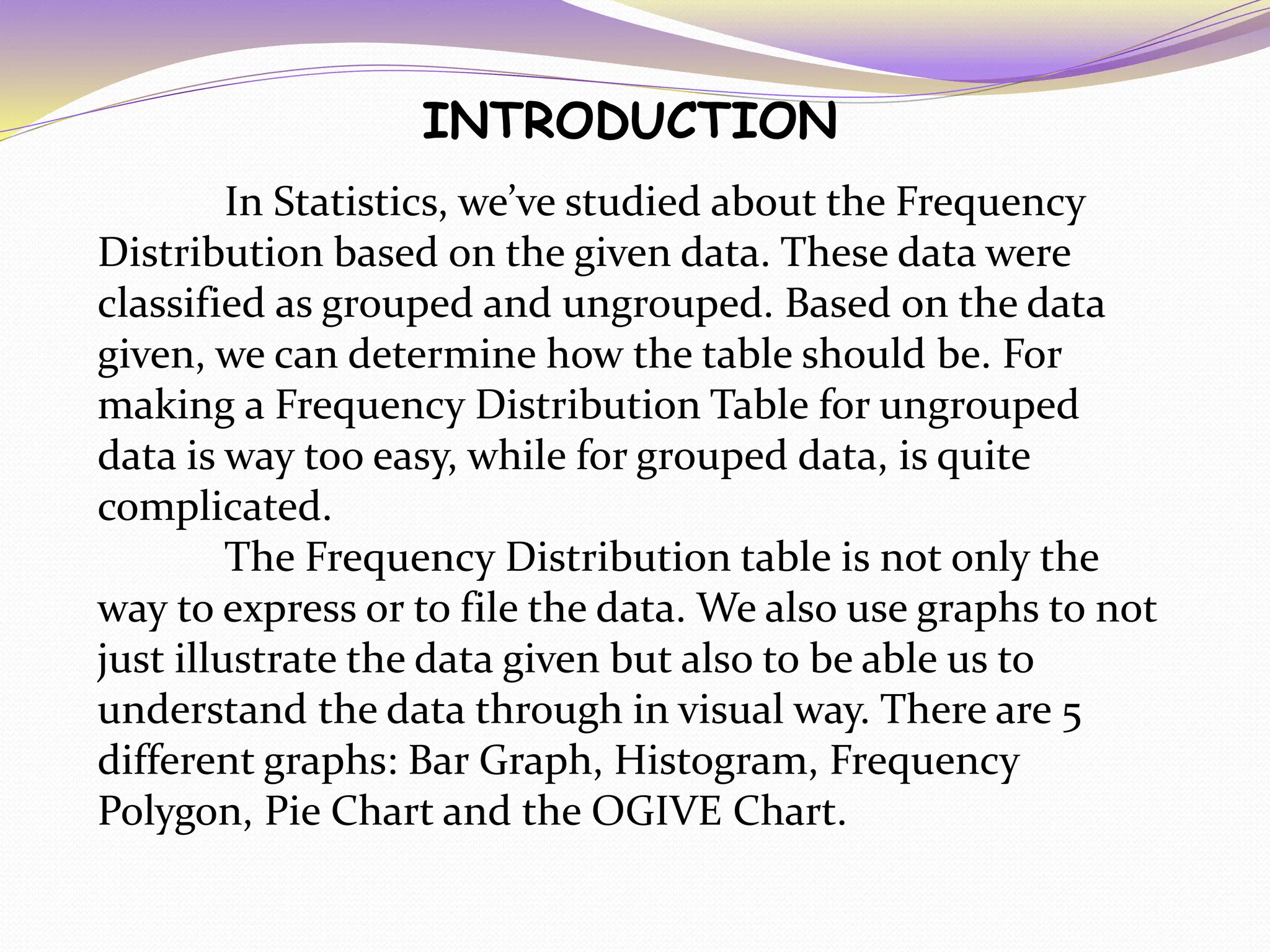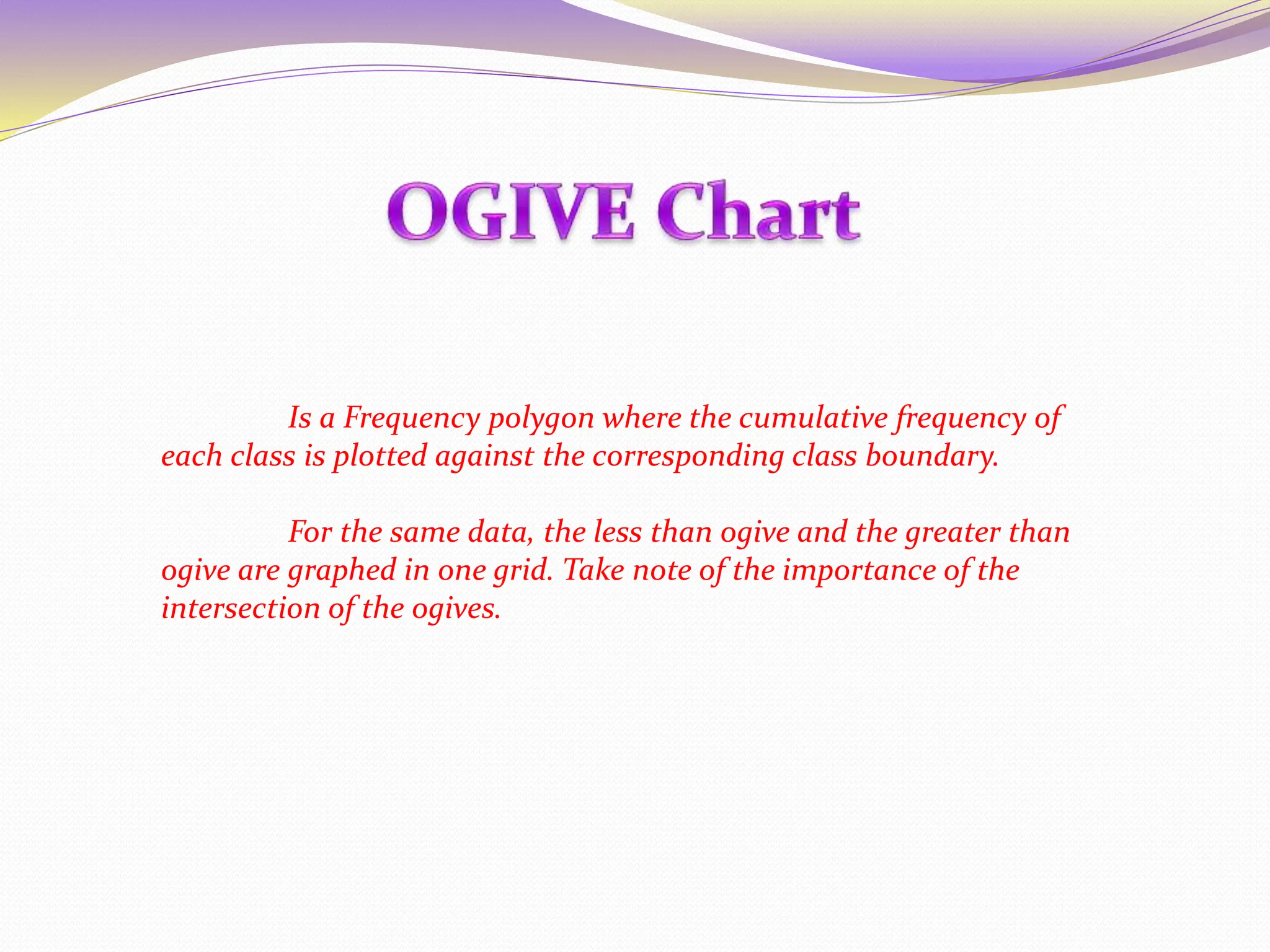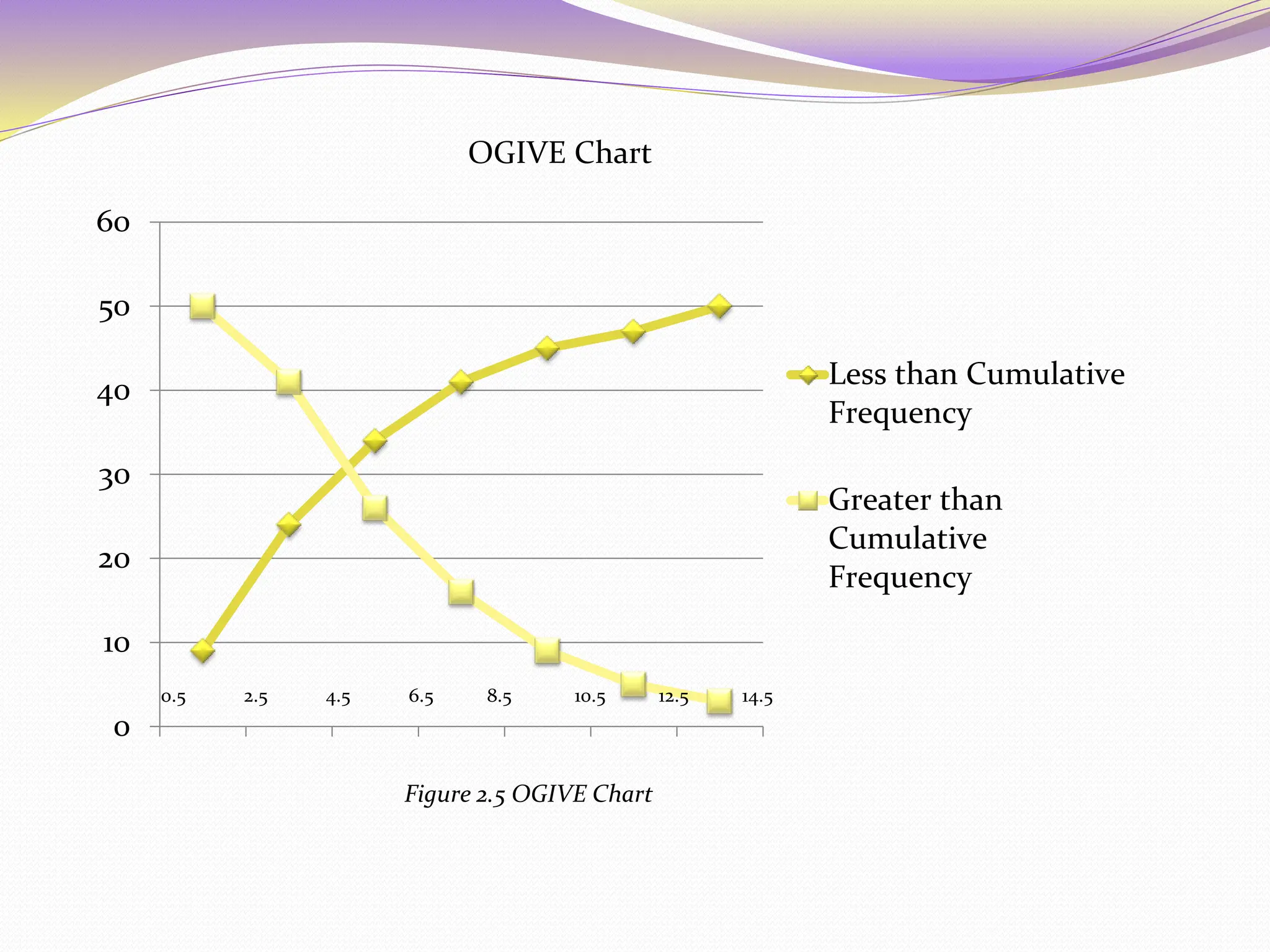The document discusses frequency distribution in statistics, differentiating between ungrouped and grouped data, and outlines methods for creating frequency distribution tables and graphs. It describes five types of graphs: bar graphs, histograms, frequency polygons, pie charts, and ogive charts, including their construction and application. Additionally, it provides an example of a frequency distribution for family sizes among 50 families.















